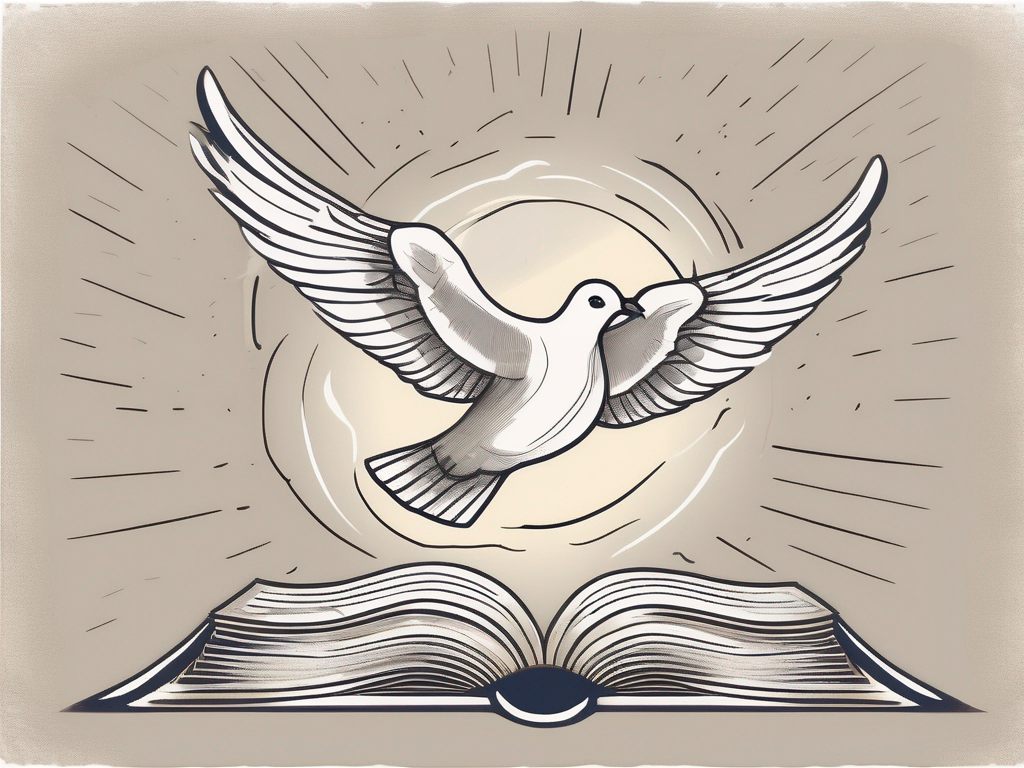The story of the Transfiguration of Jesus is a profound tale found in the Bible that holds great significance for Christians. It is a powerful moment where Jesus reveals his divine glory to select disciples, offering a glimpse into the magnificence of his true nature. Understanding the meaning behind this event can deepen our appreciation for Jesus’ mission and strengthen our faith in his teachings.
Understanding the Significance of Transfiguration
The Transfiguration is a key moment in the life of Jesus, showcasing his unique relationship with God the Father. This event occurs after Jesus reveals his impending death to his disciples, highlighting the importance of his divine identity and the purpose of his ultimate sacrifice on the cross. It is a moment of transformation, both for Jesus himself and for those who witness it.
From a theological perspective, the Transfiguration represents the union of the Law (represented by Moses) and the Prophets (represented by Elijah) with Jesus as the fulfillment of these ancient teachings. It also serves as confirmation of Jesus’ role as the long-awaited Messiah, the Son of God sent to redeem mankind.
Furthermore, the Transfiguration holds deep symbolic meaning. The mountain on which it takes place is often associated with divine encounters throughout the Bible. It is a place where heaven and earth meet, where mortals catch a glimpse of the divine realm. In this sense, the Transfiguration can be seen as a bridge between the earthly and the heavenly, a moment when the veil is lifted and the glory of God is revealed.
Theological Perspectives on Transfiguration
Various theological interpretations enrich our understanding of the Transfiguration. Some view it as a glimpse of the heavenly glory that Jesus possessed before his incarnation, highlighting his divine nature. Others emphasize the role of the Transfiguration in revealing Jesus’ human and divine natures, affirming the concept of the Incarnation—the belief that Jesus is both fully God and fully man.
Moreover, the Transfiguration serves as a powerful reminder of the importance of prayer. Jesus goes up the mountain to pray, and it is during this time of communion with God that the Transfiguration occurs. This highlights the significance of prayer in our own lives, as a means of drawing closer to God and experiencing transformation.
This event also holds a message of hope for believers, as it demonstrates that those who follow Jesus can experience a similar transformation. It serves as a reminder that, though we may bear our own burdens and face hardships, we have the assurance of God’s presence and the promise of a future glorious transformation.
The Transfiguration in Different Bible Versions
The Transfiguration is recounted in the Gospels of Matthew, Mark, and Luke, with each providing distinct perspectives and details. Matthew emphasizes Jesus’ exalted status as the Son of God, while Mark highlights the disciples’ confusion and awe. Luke emphasizes the importance of prayer, presenting the Transfiguration as a response to Jesus’ conversation with God.
These varied accounts offer a comprehensive understanding of the event, allowing us to appreciate different aspects of the Transfiguration and how it impacted the characters involved.
Additionally, the Transfiguration is referenced in the Second Epistle of Peter, where it is described as a confirmation of Jesus’ divine authority and a validation of the apostles’ teachings. This epistle further emphasizes the significance of the Transfiguration as a pivotal moment in the early Christian community, strengthening their faith and providing them with a solid foundation for their beliefs.
Furthermore, the Transfiguration has been a source of inspiration for countless artists throughout history. Paintings, sculptures, and other forms of artistic expression have sought to capture the awe and wonder of this event, allowing viewers to engage with the story on a visual and emotional level.
In conclusion, the Transfiguration holds immense significance in the life of Jesus and in the theological understanding of his identity and mission. It represents a moment of divine revelation, a glimpse into the heavenly realm, and a demonstration of the transformative power of God. Through the various perspectives and interpretations, we are invited to delve deeper into the meaning of this event and its implications for our own lives as followers of Christ.
The Characters Involved in the Transfiguration Story
The Transfiguration involves several key individuals, each playing a significant role in the unfolding of this extraordinary event. Understanding their roles helps us grasp the depth of meaning behind the Transfiguration.
Role of Jesus in the Transfiguration
As the central figure of the story, Jesus’ role in the Transfiguration is paramount. His transfigured appearance reveals his divine glory and serves as a confirmation of his identity as the Son of God. This dazzling transformation affirms Jesus’ authority and highlights his connection to the heavenly realm.
Furthermore, Jesus’ presence in the Transfiguration narrative reminds us of his sacrificial mission and his ultimate purpose—to reconcile humanity with God through his death and resurrection.
Jesus, the embodiment of love and compassion, stands as a beacon of hope for all who encounter him. His divine nature shines through, illuminating the path to salvation and offering a glimpse of the glory that awaits those who believe in him.
The Involvement of Moses and Elijah
The appearance of Moses and Elijah alongside Jesus during the Transfiguration adds another layer of significance. Moses represents the Law, given by God to guide his people, while Elijah embodies the Prophets, those chosen by God to deliver divine messages.
Together, Moses and Elijah signify the fulfillment of the Law and the Prophets in Jesus. Their presence underscores Jesus’ authority and affirms his role as the promised Messiah, bringing together the Old Testament prophecies and teachings in a new and transformative way.
Moses, the great leader who led the Israelites out of Egypt, symbolizes the liberation and deliverance that Jesus brings to humanity. Elijah, the powerful prophet who confronted idolatry and called the people back to God, represents the prophetic voice that prepares the way for Jesus’ ministry.
In their presence, Jesus stands as the culmination of God’s redemptive plan, the embodiment of both the Law and the Prophets. The Transfiguration serves as a pivotal moment, revealing the unity of God’s message throughout history and pointing towards the fulfillment of God’s promises in Jesus.
The Reaction of Peter, James, and John
During the Transfiguration, the disciples Peter, James, and John witness this awe-inspiring event firsthand. Their reactions reflect the mixture of fear and wonder that often accompanies encounters with the divine.
Peter, in his enthusiasm, suggests building three tents for Jesus, Moses, and Elijah. Although well-intentioned, this response demonstrates the disciples’ limited understanding of the moment’s significance and their struggle to grasp the extraordinary nature of Jesus’ divinity.
James and John, similarly overwhelmed, are left speechless by the divine revelation before them. In their silence, they contemplate the profound mystery unfolding before their eyes, their hearts filled with a sense of reverence and awe.
These disciples, chosen by Jesus to witness this extraordinary event, represent humanity’s response to encountering the divine. Their mixture of fear, wonder, and confusion mirrors our own human limitations in comprehending the vastness of God’s glory.
Through their experiences, we are reminded that encountering the divine is not always easy to understand or put into words. It requires humility, openness, and a willingness to embrace the mystery that lies beyond our comprehension.
The Transfiguration, with its cast of characters, invites us to reflect on the significance of this event in our own lives. It challenges us to deepen our understanding of Jesus’ divinity and to embrace the transformative power of encountering the divine presence in our midst.
The Setting and Timing of the Transfiguration
The Transfiguration takes place on a mountain, referred to as the Mount of Transfiguration. The exact identification of this mountain remains uncertain, but its significance lies in its function as a space for divine revelation.
Mountains hold significance throughout biblical stories, often serving as locations for encounters with God or moments of divine revelation. Thus, the choice of a mountain for the Transfiguration reinforces the authoritative nature of Jesus’ transfigured state and the importance of this event in revealing his divine glory.
But what makes this particular mountain special? Some scholars suggest that the Mount of Transfiguration could be Mount Tabor, a prominent mountain in the region of Galilee. This mountain stands alone, rising majestically from the surrounding plains, making it a fitting setting for a significant event like the Transfiguration.
Others propose that the Mount of Transfiguration could be Mount Hermon, the highest peak in the region. This mountain is known for its stunning beauty and its snow-capped summit, which could symbolize the purity and holiness of Jesus’ transfigured state.
The Timing and Its Significance
The timing of the Transfiguration is essential in understanding its purpose within Jesus’ ministry. It occurs shortly before Jesus’ journey to Jerusalem and his subsequent crucifixion. The Transfiguration serves as a pivotal moment of confirmation for Jesus, strengthening his resolve as he faces the challenges and suffering ahead.
As Jesus prepares to fulfill his mission on earth, the Transfiguration becomes a moment of divine affirmation. It is a glimpse of his true nature and glory, a reminder of his divine identity as the Son of God. This experience would have provided Jesus with the strength and encouragement needed to endure the trials that awaited him.
Additionally, the timing suggests that Jesus shared this extraordinary experience with his closest disciples as a means of preparing them for the difficult times to come. Witnessing his transfiguration would bolster their faith and trust in him, enabling them to persevere through the trials they would face as his followers.
Imagine the disciples’ awe and wonder as they witnessed Jesus’ transformation. It must have been a breathtaking sight, as his face shone like the sun and his clothes became dazzling white. This extraordinary event would have left an indelible mark on their hearts and minds, reminding them of the divine power and authority of their beloved teacher.
Moreover, the timing of the Transfiguration also holds symbolic significance. It takes place approximately six days after Jesus predicts his own death and resurrection. This connection between the Transfiguration and Jesus’ impending sacrifice on the cross highlights the redemptive purpose of his mission.
In conclusion, the setting and timing of the Transfiguration add depth and meaning to this pivotal event in Jesus’ ministry. The choice of a mountain as the setting emphasizes the divine nature of Jesus’ transfigured state, while the timing underscores its significance in preparing Jesus and his disciples for the challenges that lie ahead. The Transfiguration serves as a powerful reminder of Jesus’ true identity and purpose, and its impact on those who witnessed it cannot be overstated.
The Message and Symbolism of the Transfiguration
The Transfiguration carries profound messages and symbolism that impact how Christians understand Jesus’ mission and teachings. It unveils essential aspects of his identity and purpose—highlighting his divinity, the fulfillment of ancient prophecies, and the significance of his impending death and resurrection.
The Divine Glory of Jesus
The dazzling transformation of Jesus during the Transfiguration reveals his divine glory in a tangible and awe-inspiring manner. This extraordinary sight confirms Jesus’ divine identity and serves as a powerful reminder of his divine nature. It affirms his authority as the Son of God and further strengthens the foundation of Christian faith.
The Fulfillment of the Law and the Prophets
Through the presence of Moses and Elijah, the Transfiguration represents the fulfillment of the Law and the Prophets in Jesus. The appearance of these revered figures signifies that Jesus embodies and surpasses the teachings and prophecies of the Old Testament. In doing so, he establishes himself as the long-awaited fulfillment of God’s promises.
The Impact of the Transfiguration on Christian Beliefs
The Transfiguration continues to hold immense significance for Christian beliefs, shaping our understanding of Jesus’ divine nature and his redemptive mission.
The Transfiguration and the Doctrine of Christ
The Transfiguration supports the doctrine of the Incarnation, affirming Jesus’ dual nature as fully God and fully man. This event underscores the reality of Jesus’ divinity, providing a tangible experience of his heavenly glory.
Furthermore, the Transfiguration reinforces the importance of Jesus’ sacrifice on the cross and his subsequent resurrection. It serves as a precursor to these pivotal moments in the Christian faith, reminding believers of the transformative power of Jesus’ life, death, and resurrection.
The Transfiguration in Christian Worship and Art
The Transfiguration has influenced Christian worship and artistic expression throughout history. It serves as a source of inspiration for worshipers and artists alike, inviting them to reflect on the divine glory of Jesus and his transformative impact on believers’ lives.
Depictions of the Transfiguration in art often emphasize the radiance of Jesus, surrounded by Moses, Elijah, and the awe-struck disciples. These visual representations offer a tangible reminder of this extraordinary event and its enduring significance within Christian tradition.
Overall, the Transfiguration of Jesus is a profound Bible story that offers us deeper insights into Jesus’ identity, purpose, and mission. From theological perspectives to the involvement of key characters, the setting and timing, and the impactful symbolism, the Transfiguration continues to shape Christian beliefs and inspire believers worldwide.












